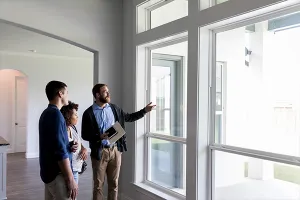
Owning a home is a responsibility. A home requires regular updates and maintenance, and owners who are good stewards of their property benefit not only themselves but also their communities. In return for all they put into their home, owners hope to achieve a measure of financial security when they finally sell. But some longtime owners feel trapped in their homes long after they’re ready to move out—causing a ripple effect that hits every segment of the market. That’s because an outdated tax policy threatens their ability to fully enjoy the appreciation they’ve earned.
New research commissioned by the National Association of REALTORS® paints a startling picture: The current federal policy on capital gains taxes is steadily and quietly distorting the housing market, locking in older homeowners, and strangling inventory just when America needs it most.
The Hidden Cost of Appreciation
Under the current tax law, homeowners can exclude up to $250,000 in capital gains from the sale of a primary residence if they file as single—or up to $500,000 for married couples filing jointly. These caps have remained unchanged since they were set in 1997 even as the value of homes has steadily climbed during this nearly 30-year period.
“A capital gains cliff is coming for the middle class, and we have the data to prove it,” says Shannon McGahn, NAR executive vice president and chief advocacy officer, during the most recent episode of the Advocacy Scoop podcast where the study was exclusively unveiled.
According to the study, 34% of homeowners (29 million) could already have enough equity in their homes to exceed the $250,000 cap, and over 10% (8 million) could have enough to surpass the $500,000 threshold. Those numbers are projected to climb rapidly.
By 2030, more than 56% of homeowners could have equity exceeding the $250,000 exclusion, and by 2035, that could rise to nearly 70%, with over 38% surpassing the $500,000 mark.
In states with exceptionally high-priced markets, such as California, Massachusetts and Colorado, the trend is even more pronounced. By 2035, 20 states are projected to have over 40% of homeowners possibly facing tax penalties simply for having built equity in their homes over time.
The “Stay-Put Penalty”
The effect is a disincentive that housing economists are calling a “stay-put penalty.” Seniors in appreciating markets—many of whom have spent decades in their homes—are delaying moves they might otherwise make. Downsizing, relocating closer to family or shifting into assisted living can become a costly and sometimes impossible proposition, thanks to looming tax bills.
What’s worse, their reluctance to sell means fewer homes are available for younger buyers. Entry-level and move-up inventory is squeezed, pushing prices higher and fueling a cycle of scarcity that frustrates first-time buyers and growing families alike.
“This stagnation in housing turnover is rippling through the entire market, driving up costs and limiting opportunity—exactly the opposite of what public policy should be encouraging,” McGahn continued. “And it grows worse each month.”
The More Homes on the Market Act
To address this looming crisis, NAR is supporting the More Homes on the Market Act, a bipartisan bill that would update the capital gains exclusion thresholds for the first time in nearly 30 years.
The legislation proposes to:
- Double the exclusion to $500,000 for individuals and $1 million for married couples
- Adjust the caps to reflect future inflation
- Free up millions of homes by reducing the tax disincentive to sell
According to the bill’s sponsors, by modernizing this outdated provision, the act would restore fairness to the tax code and bring much-needed fluidity back into the housing market. Evan Liddiard, NAR director of federal taxation, discussed NAR’s support for the bill during at tax discussion at the REALTORS® Legislative Meetings: “Now, there were things that we were really pushing for [as part of tax reform that includes other pro–real estate provisions], including the More Homes on the Market Act that would double the exclusion level for capital gains, and make it so that older homeowners in their houses for a long time could be more willing to sell because they don't have to pay that big capital gains tax.”
Support for the legislation was a key talking point for thousands of NAR members who came to Washington to meet with their lawmakers.
Equity Shouldn’t Be a Trap
“Building equity shouldn’t come with a penalty—it should come with opportunity,” McGahn says. “Congress created this exemption for a reason. Homeownership is the primary way middle-class Americans build wealth, with homeowners having nearly 40 times the net worth of renters. Congress intended to incentivize homeownership and not hit the middle class with a giant home equity tax.”









